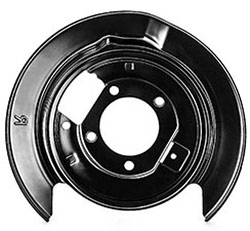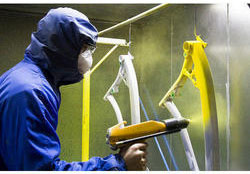E-COATING VS. POWDER COATING

Among the vast array of industrial metal finishing options are two comparable processes known as electrophoretic deposition (colloquially known as electrocoating or e-coating) and powder coating. These two processes are similar, as they both involve the application of a coating to a substrate for purposes such as enhancing corrosion protection, increasing wear resistance, promoting adhesion and many others.
However, there are some important advantages that e-coating has over powder coating that you should consider when deciding which is best for your manufacturing operation. Let’s take a closer look at e-coating and powder coating.
E-coating is more similar to electroplating than powder coating. With e-coating, the substrate is immersed in a bath that may consist of paint, epoxy or other water-based solution. An electric current is then used to attract the particles that are suspended in the liquid solution and deposit them onto the surface of the substrate. The electrodeposition continues until the desired level of coating thickness is achieved, which can be regulated by increasing or decreasing the voltage level. The coated substrate is then cured in an oven to promote cross-linking.

Powder Coating
While e-coating is considered to be a “wet” process, powder coating involves the application of a dry powder consisting of a precise combination of epoxy resins and various curing agents. A spray gun is used to electrostatically apply the particles onto the surface of the substrate. The fact that the particles are electrically charged is what causes them to adhere to the surface. Curing is also used as the finishing step in the powder coating process. Curing causes the particles to melt and also serves as the catalyst for a chemical reaction that produces the desired finish.

When Does E-Coating Make the Most Sense?
Because of the e-coating’s application, it is typically the better option when coating parts that contain hard-to-reach areas. That’s because the immersion of an object into a liquid promotes a more even and thorough distribution of the coating than can normally be achieved with a spray gun. The powder coating application process also tends to produce a thicker coating.
In contrast, the e-coating process provides greater ease of regulation of the thickness level — it’s much easier to produce a thinner coating with e-coating than with powder coating. These two advantages are particularly important in the auto industry, where an e-coating is typically applied as a primer coat prior to painting for increased corrosion protection.
- Surface finishing
Related Tags :








